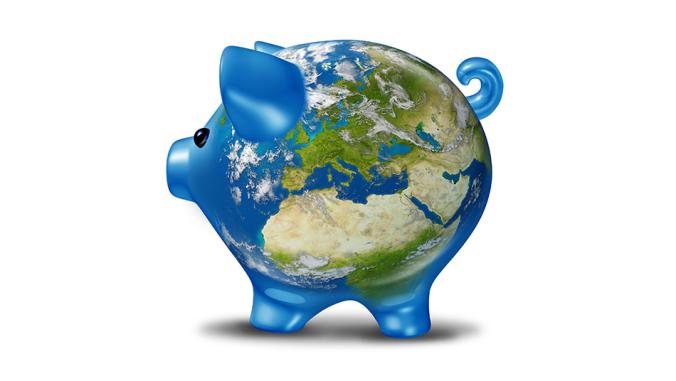Apple's new campus partially built with green bonds
In fiscal 2016, it dedicated over $441 million to 16 projects.

A year after Apple issued the largest green bond by any U.S. corporation, the tech giant is providing a closer peek at the projects the $1.5 billion issue has helped fund so far.
Its first Green Bond Impact Report (PDF), which highlights the projects funded in the 2016 fiscal year, shows that Apple allocated about $441.6 million in funds to fund 16 projects.
One initiative to benefit was Apple’s new headquarters in Cupertino, California, now officially known as Apple Park, scheduled to open in April.
The headquarters designed and championed by the late Apple co-founder Steve Jobs will be powered entirely by renewable energy, and largely will be generated by 4 megawatts of directed biogas fuel cells and a 16-megawatt rooftop solar photovoltaic system.
The site also will use LED lighting fixtures, which the company expects to produce a 25 percent savings in energy consumption over previously standard lighting systems.

In 2016, more than $129 million of Apple's green bond proceeds went to renewable energy projects, more than $232 million went to green building priorities, $74.6 million to energy efficiency and $2.86 million to recycling or materials recovery.
We wanted to demonstrate how businesses can lead in driving the reduction of global emissions.
When the projects are complete, Apple estimates its investments will support more than 330 million kilowatt-hours of annual renewable energy generation, result in more than 20.2 million gallons in annual water savings and create more than 1.8 million square feet of green buildings.
Apple also offered a progress update on Liam, a line of robots that can quickly disassemble an iPhone 6 and separate high-quality components for specialty material recycling, according to the impact report.
Liam uses a fully autonomous process. For every 10,000 phones the robots disassemble, Apple is able to recover 190 kg of aluminum, 80 kg of copper, 0.13 kg of gold, 0.04 kg of platinum group metals, 0.70 kg of silver, 5.5 kg of tin and 2.4 kg of rare earth elements.
Apple leads among U.S. corporate issuers
Apple said in the report that it organized its green bond after the climate change agreement at the 2015 United Nations Climate Change Conference (COP21) in Paris.
The company stated, "We wanted to demonstrate how businesses can lead in driving the reduction of global emissions."
Apple selected the projects based on the following criteria:
- Alignment with eligibility criteria
- Reflection of its three environmental priorities (reduce impact on climate change through use of renewable energy sources and energy efficiency, pioneer use of safer materials, and conserve precious resources)
- Measurability of environmental benefits
- Magnitude of environmental benefits
- Feasibility to track and audit project expenditure
A recent report by Moody’s Investor Services suggests that outside of leaders such as Apple, U.S. corporations are lagging when it comes to using green bonds to fund sustainable business programs and best practices.
In a previous GreenBiz article about U.S. green bond issuances, Henry Shilling, a senior vice president at Moody’s, said that some U.S. corporations are hesitant to issue green bonds because they do not see it as a value proposition because green bonds have the same market price as non-green bonds.
"There is the view that it (green bond issuance) may take more work and more of an administrative burden," said Shilling. "Also there is some concern that there is a reputational risk if they issue a green bond and the marketplace doesn’t align with the issuer's viewpoint that these are green assets."
Need for better green bond guidelines?
One concern among corporate green bond issuers is the lack of unified standards or guidelines for disclosing the proceeds of green bonds.
Apple is using the Green Bond Principles, a set of voluntary guidelines for green bond issuance that were drafted by banks including Bank of America Merrill Lynch, Citi and JPMorgan Chase.
Apple engaged Sustainalytics, a provider of ESG research, to review the projects funded during 2016 by its green bond, and to provide an assessment as to whether the projects met the Use of Proceeds criteria and Reporting Commitments.
The company also hired Ernst & Young as its auditor to see how the proceeds from the green bond were used.
In its compliance review of the green bond, Sustainalytics said:
"Based on the limited review procedures conducted nothing has come to Sustainalytics’ attention that causes us to believe that, in all material respects, the allocation of US $441,643,062.65 from Apple Inc.’s green bond is not in alignment with the Use of Proceeds and Reporting Criteria outlined in the Apple Inc. Green Bond Framework."





